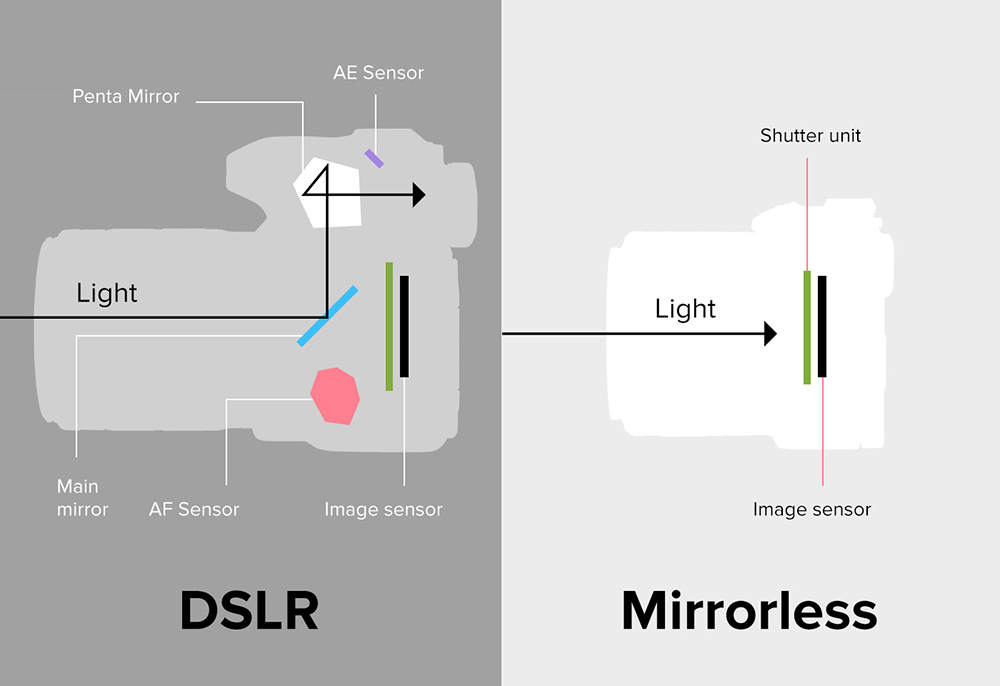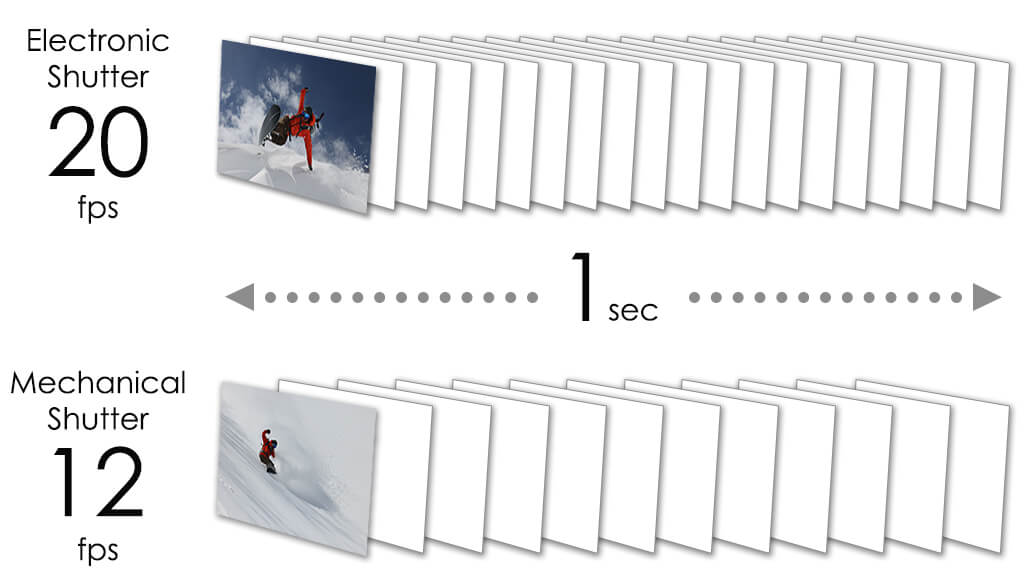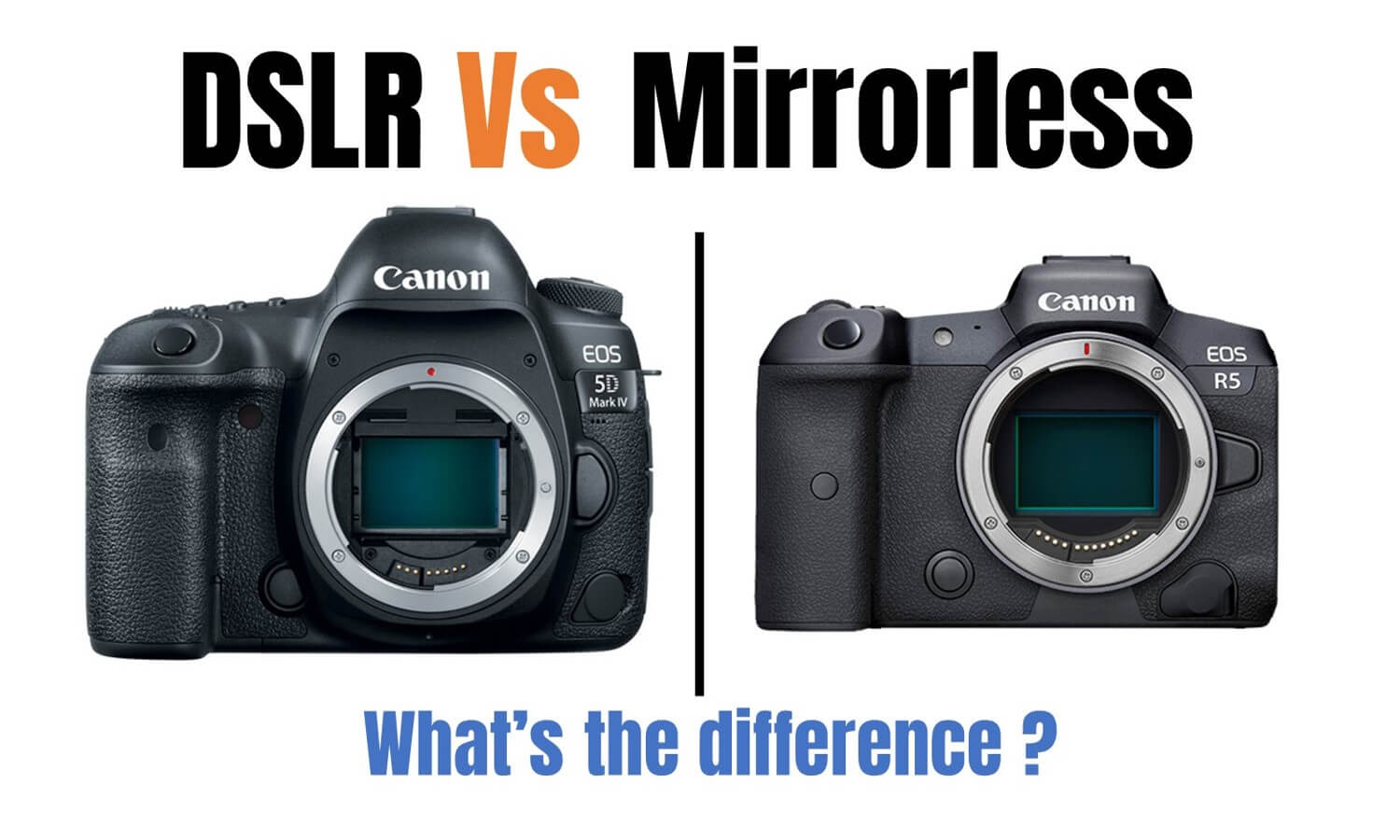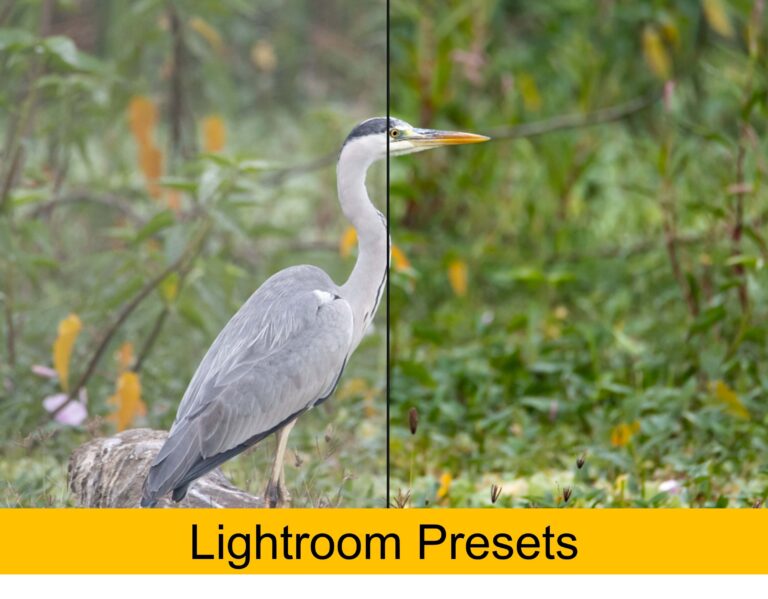Mirrorless vs DSLR is a debate that has gathered momentum in recent years. Fans from both sides have a lot to say about their favorite camera system. In this article we will take a look at key differences , advantages and disadvantages of both mirrorless and DSLR camera systems.
DSLRs have certain limitations when compared to mirrorless cameras. It is partly due to the fact that SLR cameras were originally designed for film. Digital was initially treated the same as film and housed in the exact same mechanical bodies.
Except for the new circuitry and electronics required to create digital film media and the back LCD, all other components remained the same. The same mechanical mirror, same pentaprism/optical viewfinder, same phase-detection mechanism for autofocus operation.
If you are into old analog photography and want to have some fun with that. Then you can read our post on using disposable analog film cameras.
Both mirrorless and DSLR cameras work with Prime and zoom lenses and can do with some kind of mounting system for quick setup and removal from tripod.
What’s different between DSLR and Mirrorless camera systems ?
Mirrorless and DSLR cameras both show the scene through the lens of the camera as you compose the image, but their display methods are completely different.
The SLR design was created long before digital cameras. Before then, the only way to display the view through the lens of a camera was to use a mirror inside the body to reflect the image up into the viewfinder. The mirror flips up when you take a photo so that the image can pass to the back of your camera, where it is exposed. This old SLR (single-lens reflex) design is different from today’s DSLRs in that the film has been replaced with a digital sensor.
Mirrorless cameras use a different approach. To create an electronic viewfinder, they use the live view captured by the camera sensor. They can eliminate the need to use an optical viewfinder and a mirror by doing this.
However , mirrorless cameras are still not as good as DSLRs in terms of battery life, ergonomics, and simple handling. Many also prefer the optical viewfinder of a DSLR.

Mirrorless vs DSLR Size and Weight
Mirrorless cameras stormed the camera market by this one major advantage , they could pack a lot more in a small compact and light weight package.
The pentaprism and mirror is removed in case of mirrorless cameras and that frees up lots of space. Mirrorless cameras are smaller than DSLRs and can therefore be lighter, more compact, and less bulky. The physical dimensions of the camera and lens are reduced by having a shorter flange distance. The difference is more visible in case of high end full frame models.
Smartphones as compact cameras have taught us an important lesson: convenience, small size, and light weight can sometimes overpower quality. Point and shoot sales are virtually dead because most people consider their smartphones “good enough” to capture those moments.
Same applies to the battle between mirrorless vs DSLR. It can be certainly said that for the same set of features and image quality , mirrorless is always more compact and lightweight compared to DSLRs. This however is not always good. There are many photographers who prefer the bulk and weight of a DSLR as it feels more rugged and steady while shooting.
Mirrorless vs DSLR Viewfinders
DSLR cameras use optical viewfinders vs EVF ( electronic viewfinders) in mirrorless cameras. Both these have their advantages and disadvantages. Lets take a look at a few of them.
Every DSLR, no matter how expensive, comes with an optical viewfinder. This is an integral part to the DSLR design. While it is rare, entry-level mirrorless cameras don’t come with viewfinders. The rear LCD is your only choice for composing photos. This is convenient, but it doesn’t always work well in bright sunlight.
In general ,Mirrorless cameras have electronic viewfinders. They display the image directly from the sensor readout, and not through an optical mirror/pentaprism.
The electronic viewfinders used to have a bad resolution and were also having lag issue in most of the first generation models. Both these issues are being resolved by the manufactures now and most new mirrorless cameras come with very decent EVFs with high resolution and practically no lag.
Electronic viewfinders have the advantage of being able to display more information than optical viewfinders. They also show the user exactly the same thing that sensor is seeing.
Most photographers still prefer to compose an image with OVF and then review the digital version on their LCD. Optical viewfinders also have more natural and bright view and perform better in low light.
Overall this battle is still in favor of DSLRs with OVFs , mirrorless cameras with better EVFs are catching up though. This cam also be down to personal preference though.
Mirrorless vs DSLR Autofocus
Autofocus was one aspect where DSLR cameras had a significant advantage over mirrorless cameras.
Professionals looking for the fastest autofocusing speed used to go straight for high end DSLR cameras. With the incredible advances in mirrorless technology, the gap has reduced dramatically, especially if you choose premium options.
While high-end DSLRs have not been updated for some time, models like the Nikon D850 or Canon EOS-1D X Mark III offer advanced systems. They are equipped with fast, efficient phase-detection autofocus systems.

The phase detect autofocus on DSLRs is limited because it only works when the mirror is down. Live View can be switched on , but it uses a slower contrast based autofocus system which is slow and not accurate.
The Dual Pixel CMOS-A technology is used in some of the newer DSLR models like the Canon EOS 250D, and Canon EOS 6D Mark II. It uses phase detection pixels embedded into the sensor. This allows for faster autofocus in Live View. While it does help to close the gap with mirrorless cameras it is still not up to the mark.
Mirrorless cameras don’t have a mirror so they use sensor-based autofocus. While many of these cameras use contrast-based AF, they are generally faster than equivalent AF modes on DSLRs. Advanced hybrid AF systems are being used by more mirrorless models. They combine phase-detect AF from a sensor with contrast-detect AF to deliver outstanding performance.
Overall this round goes to mirrorless cameras and it is expected to be that way as most camera manufacturers are focusing their efforts more on Mirrorless technology and DSLRs have taken a backstage lately.
Mirrorless vs DSLR Image quality
Image quality is generally driven by the sensor size and the processing capability of the camera. DSLR and mirrorless cameras do not have significant difference in both these cases and hence both have similar image qualities.
DSLR cameras generally use APS-C and full frame sensors and same is the case with Mirrorless cameras. Mirrorless cameras also tend to use the MFT ( micro four thirds) sensor size a lot more.
Overall there is nothing to select between these two when it comes to image quality.
Mirrorless vs DSLR Continuous shooting
Mirrorless cameras are advancing in continuous shooting modes to capture action shots. Mirrorless cameras have fewer moving parts and that really helps. Mirrorless models are also having the 4K and 8K video recording capabilities. This requires serious processing power which also allows for continuous shooting.

Mirrorless cameras overall have higher continuous shooting rate capability. The best DSLR model to shoot continuous fast action scenes is Canon 1D Mark III which shoots at 16 FPS . Panasonic and Sony both have shown that they can shoot 20 or even 30 FPS with their mirrorless models. Even entry level mirrorless cameras can have better continuous shooting rates compared to DSLR.
Overall this round goes to mirrorless cameras.
Mirrorless vs DSLR for Video
Both high end DSLR and mirrorless cameras offer 4K Video quality and some mirrorless cameras have also started offering 8K as well.
When it came to professional HD and Full HD video capture, DSLRs were a step ahead of mirrorless cameras. Their vast range of lenses and other accessories made them a hit with pro video makers – the Canon EOS 5D Mk II, in particular, changed the game by shooting video from a full-sized sensor, for far less money than many pro video cameras.
However, mirrorless cameras have been gaining popularity in recent years. They offer a wide range of video features that DSLRs simply can’t match.
Mirrorless cameras are more popular than DSLRs for 4K capture, but DSLRs are slow to provide this feature. There are not many options for this type of video, as there have been very few new DSLRs in the last months. For entry-level models that do offer 4K video feature – such as the Canon EOS 850D – a heavy crop is applied, which is pretty limiting in many situations.
You also have the live view autofocus and processing speed offered by mirrorless cameras. The growing number of adapters and accessories available to video shooters gives you a more complete system.
Overall Mirrorless cameras will win the battle here going foreword. Right now we will say it is neck & neck.
Panasonic and Sony have definitely carved out a space for them in this area. Sony A7S III and Panasonic GH5 and GH5S have led the video battle against DSLR cameras and come out winners.
Mirrorless vs DSLR Battery life
DSLR cameras win hands down in this department. They generally have much higher battery life compared to mirrorless cameras.
- DSLR: Average range is 500 to 800 shots. However, higher-end models can take over 1,000 shots per charge. Pro DSLRs can offer up to 2000+ shots per charge.
- Mirrorless: These are much weaker and usually take 250-350 shots per charge. Others manage 500 to 700 shots per charge.
The DSLR battery is mainly consumed to move the mirror up and down and for LCD display. Mirrorless cameras also have to power the EVF continuously and that’s what consumes a lot of battery. DSLR batteries are also larger in size on many occasions.
Mirrorless vs DSLR for beginners
Most beginners used to begin their photography journey with a point and shoot camera and graduate slowly to a APS-C and then eventually a full frame camera.
With smartphones wiping out the point and shoot cameras , the lower end of the market is now vacant. Many entry level DSLR cameras with consumer oriented features still attract beginner photographers. Mirrorless cameras are definitely making a mark though.
Many new photographers are starting their journey with a mirrorless camera system. One must realize that once you buy or invest into a camera system it is hard to get out !
Lower prosed mirrorless cameras are sure to dominate the beginner friendly camera market in coming future.
These entry-level mirrorless options are capable of handling more than any point-and shoot or mobile camera, and they’re still easy to use for beginners. These mirrorless cameras also have large sensors and manual controls, as well as the ability to switch lenses to suit different types of photography.
The latest entry-level mirrorless cameras have advanced features, which is important because they can be used as learning tools to help you learn and grow in photography. A majority of beginner mirrorless cameras include a ‘kit lens’ that covers the most common shooting situations.
This means that you will get a zoom range of about 3x, as well as enough flexibility to experiment in depth of field. You’ll also be able expand your shooting setup once you are more familiar with the system and can invest in better lenses.
Following are some of the best beginner mirrorless cameras in 2021.
- Fujifilm X-T200
- Olympus OM–D E-M10 Mark IV
- Panasonic Lumix GX9
- Sony Alpha A6100
- Panasonic Lumix G100
- Nikon Z5
- Fujifilm X-A7
- Canon EOS M6 Mark II
- Sony Alpha A6000
- Olympus PEN e-PL10
Canon Mirrorless vs DSLR
Canon’s DSLR camera range is called EOS DSLR cameras. Mirrorless cameras have two options: EOS R or EOS M. Both mirrorless and DSLR cameras can use interchangeable lenses. These lenses can be swapped as necessary. Both cameras can produce high-quality images. Both systems offer manual and automated control.
Canon DSLR cameras
- EOS 1500D
- EOS 850D
- EOS 80D
- EOS 90D
- EOS 7D Mark II
- EOS 6D Mark II
- EOS 5D Mark IV
- EOS 1D Mark III
Canon Mirrorless cameras
- EOS M200
- EOS M6 Mark II
- EOS R
- EOS RP
- EOS R5
- EOS R6
Nikon Mirrorless vs DSLR
Nikon also offers a complete range of mirrorless and DSLR cameras catering to all sections of photographers. Both ranges cover entire price range as well with budget to expensive models.
Nikon DSLR cameras
- Nikon D3500
- Nikon D5300
- Nikon D7200
- Nikon D750
- Nikon D780
- Nikon D850
- Nikon D6
Nikon Mirrorless cameras
- Nikon Z50
- Nikon Zfc
- Nikon Z5
- Nikon Z6
- Nikon Z6 II
- Nikon Z7
- Nikon Z7 II
There are many other DSLR and mirrorless camera makers. Leica makes some of the best cameras. You can read about it here.
Mirrorless vs DSLR Overall Summary
| Parameter | DSLR Cameras | Mirrorless Cameras |
|---|---|---|
| Size and Weight | Good | Better |
| Image quality | Equal | Equal |
| Autofocus | Good | Better |
| Viewfinder | Better | Good , Getting better |
| Features | Equal | Equal |
| Video Features | Good | Better |
| Battery life | Very Good | Bad |
| Beginner friendly | Good | Better |
| Lens options | Better | Good , Getting better |
| Cost | Equal | Equal |
Mirrorless vs DSLR : Which is better ?
Overall the battle of DSLR vs Mirrorless finally comes down to your personal choice and what SYSTEM you want to invest in.
With a lot of focus from camera manufacturers on development of new and better mirrorless models , it looks like mirrorless cameras will win the battle in long term.





